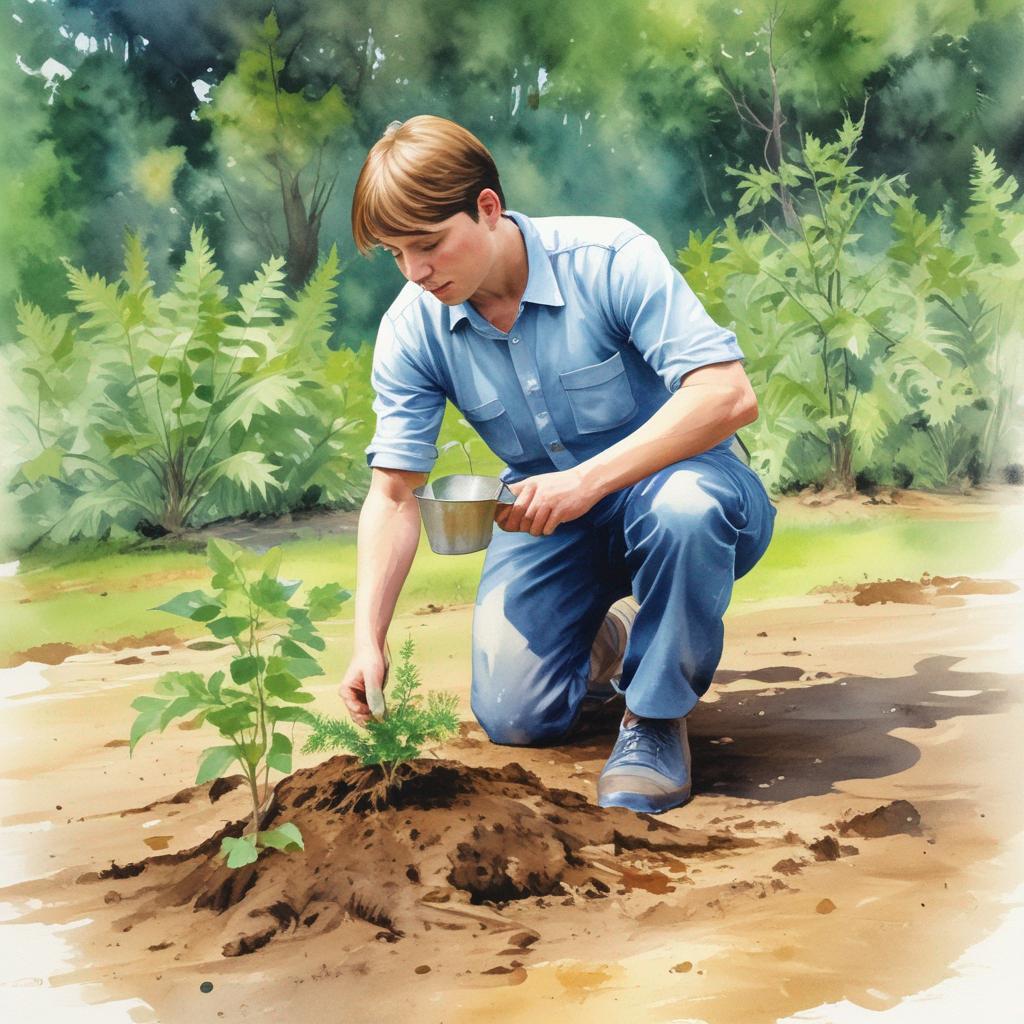The Garden of Success
Cultivating Your Dreams with Intention and Care
Success is not an accident. It is cultivated, much like a thriving garden. It requires patience, planning, effort, and a willingness to weather challenges along the way. Each step of gardening, from choosing the right plot to harvesting the fruits of labor, mirrors the journey of personal and professional achievement.
By understanding and embracing this metaphor, we can learn valuable lessons about growth, resilience, and intentional action. Let us walk through the essential steps required to create The Garden of Success and nurture it into full bloom.

1. Choosing the Plot: Deciding on Your Vision
Every garden starts with a decision. Where will it be planted? What purpose will it serve? Will it be a vegetable garden that nourishes and sustains, or a flower garden that brings beauty and joy? Just as a gardener selects the best location for planting, a person on the path to success must first define their vision.
Success looks different for everyone. Some seek financial independence, others crave creative fulfillment, and some strive for personal growth and impact. Before any meaningful work begins, it is crucial to choose a "plot" that aligns with your purpose, values, and long-term aspirations.
Key Questions to Ask Yourself:
• What do I truly want to achieve?
• Where do my strengths and passions lie?
• What kind of "garden" will bring me fulfillment?
Choosing the right plot means setting a clear goal and ensuring it is in the best location; your ideal industry, passion, or field of expertise. Without this clarity, even the most fertile soil will not produce the desired results.
2. Enriching the Soil: Preparing for Growth
No matter how promising a plot of land appears, it will not yield healthy plants unless the soil is prepared. The same is true for success. The "soil" in this metaphor represents your mindset, skills, and environment. If the soil lacks nutrients, the garden will struggle to grow.
In the pursuit of success, enriching the soil means investing in personal development, education, and creating a supportive environment. It is about ensuring you have the knowledge, resources, and mental resilience to sustain long-term growth.
Ways to Enrich Your Soil:
• Read books, take courses, and expand your knowledge base.
• Surround yourself with supportive people who encourage growth.
• Cultivate a positive mindset that embraces learning and challenges.
Many people skip this step, eager to plant their seeds without preparing the ground. However, a foundation of strong habits, clear values, and the right influences will ensure a more abundant harvest.
3. Digging Up the Ground: Breaking Through Old Patterns
With the vision set and the soil enriched, the next step is to break new ground. Digging up the soil represents the willingness to put in effort, to break old habits, and to create space for growth.
This step is often the most challenging because it requires stepping outside of comfort zones. It involves taking action, making mistakes, and learning from failures. Just as digging can be physically exhausting, breaking through self-doubt and old patterns can be mentally and emotionally demanding.
What Digging Up the Ground Looks Like:
• Taking the first step toward a goal, even if it feels uncertain.
• Developing new habits that replace unproductive ones.
• Embracing discomfort as a sign of growth rather than a reason to quit.
Without this effort, no progress can be made. The willingness to "get your hands dirty" and take action is what separates dreamers from doers.
4. Clearing Out the Rocks: Removing Obstacles & Limiting Beliefs
Once the soil is turned, the next step is clearing out the rocks; those hard, unyielding obstacles that prevent growth. In life, these rocks represent limiting beliefs, fears, distractions, and external challenges that threaten progress.
A garden cannot thrive if the roots constantly hit resistance. Similarly, success is difficult to achieve if self-doubt, negative influences, or poor habits remain in place.
How to Clear the Rocks from Your Garden of Success:
• Identify limiting beliefs and challenge them.
• Remove distractions that do not serve your purpose.
• Address external obstacles with creative solutions and persistence.
This is not a one-time task. Just as weeds and new rocks may appear over time, obstacles in life require continual effort to manage and remove.
5. Choosing the Right Seed: Selecting the Best Opportunities
A gardener does not plant just any seed—they choose based on what they want to harvest. Likewise, success depends on selecting the right opportunities, skills, and projects that align with one's long-term vision.
Many people make the mistake of chasing every opportunity that comes their way, spreading themselves too thin. However, a garden grows best when it is intentionally designed with a clear purpose.
Factors to Consider When Choosing Your Seeds:
• Does this opportunity align with my goals and values?
• Will this skill or project contribute to long-term success?
• Do I have the resources and commitment to nurture it properly?
A garden filled with the wrong seeds will not provide the desired results. Be intentional in choosing where to focus your time and energy.

6. Taking Intentional Action: Cultivating Growth with Consistency
Planting the seed is only the beginning. The real work comes in watering, tending, and ensuring steady growth. In life, this step represents the importance of consistency, discipline, and persistent effort.
Many people expect instant results, but true success, like a flourishing garden, requires ongoing attention.
How to Nurture Growth:
• Develop daily habits that contribute to progress.
• Stay committed even when results are not immediately visible.
• Adapt to challenges and refine strategies as needed.
Success does not happen overnight. It is the product of small, daily actions that accumulate over time.
7. Weathering the Storms: Overcoming Challenges
Every gardener knows that storms will come. There will be dry spells, unexpected pests, and sudden changes in weather. Similarly, in the pursuit of success, setbacks, failures, and unforeseen obstacles are inevitable.
The difference between those who succeed and those who give up lies in their ability to weather the storms.
Keys to Resilience:
• View setbacks as learning opportunities, not failures.
• Stay flexible and adapt to changing circumstances.
• Maintain faith in the process and keep pushing forward.
A strong garden, and a strong person, can withstand difficulties and emerge even stronger.
8. Harvesting Success: Reaping the Rewards of Your Hard Work
At last, after months or even years of dedication, the garden begins to bloom. Fruits and vegetables are ready for picking, flowers are in full bloom, and all the effort has paid off.
This stage represents achieving success, reaching goals, and enjoying the rewards of hard work. It is a time for celebration, reflection, and gratitude.
What Harvesting Success Looks Like:
• Seeing tangible results from your efforts.
• Feeling a sense of fulfillment and accomplishment.
• Using your success to plant new seeds for future growth.
However, the journey does not end here. Every gardener knows that after a harvest, a new cycle begins. The best way to sustain success is to keep planting, learning, and evolving.

Final Thoughts: Growing a Legacy Beyond Yourself
The most beautiful gardens are not just for the gardener—they inspire others, provide nourishment, and create lasting beauty.
True success is not only about personal achievement but also about making a difference. Whether through mentorship, sharing knowledge, or giving back, a thriving garden of success can positively impact others for years to come.
By understanding and applying these gardening principles—choosing the right plot, enriching the soil, clearing obstacles, selecting seeds wisely, nurturing growth, and weathering storms—you can cultivate success that lasts a lifetime.
Now, it is time to pick up the tools, get your hands dirty, and start planting the seeds of your dreams. Your Garden of Success is waiting.
Wholistic Life Coaching Certification
Discover more from Stephen B. Henry
Subscribe to get the latest posts sent to your email.